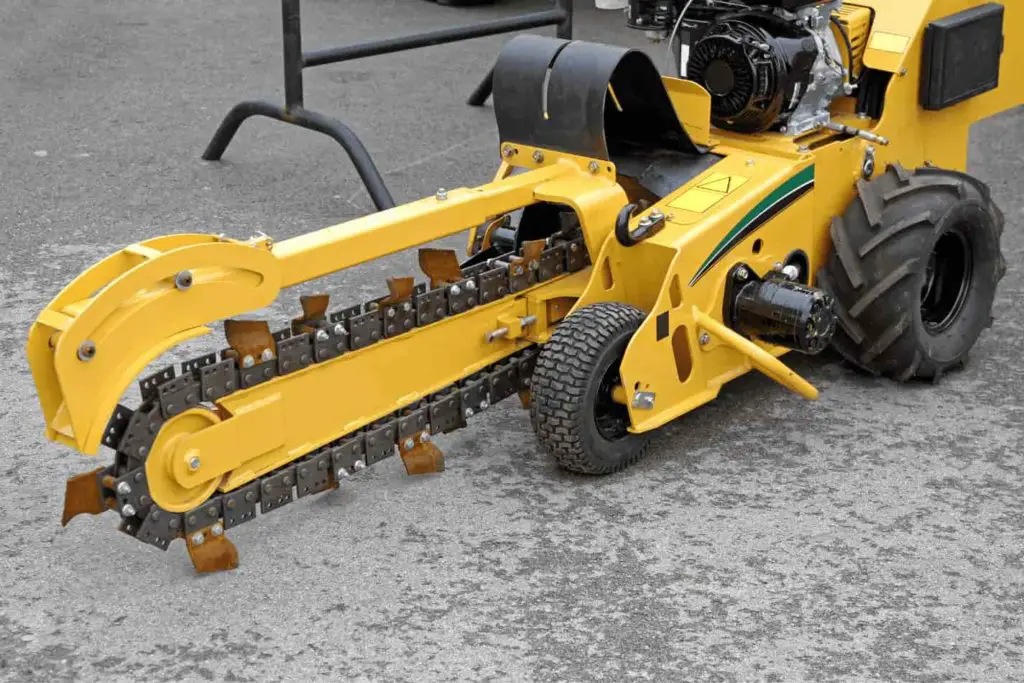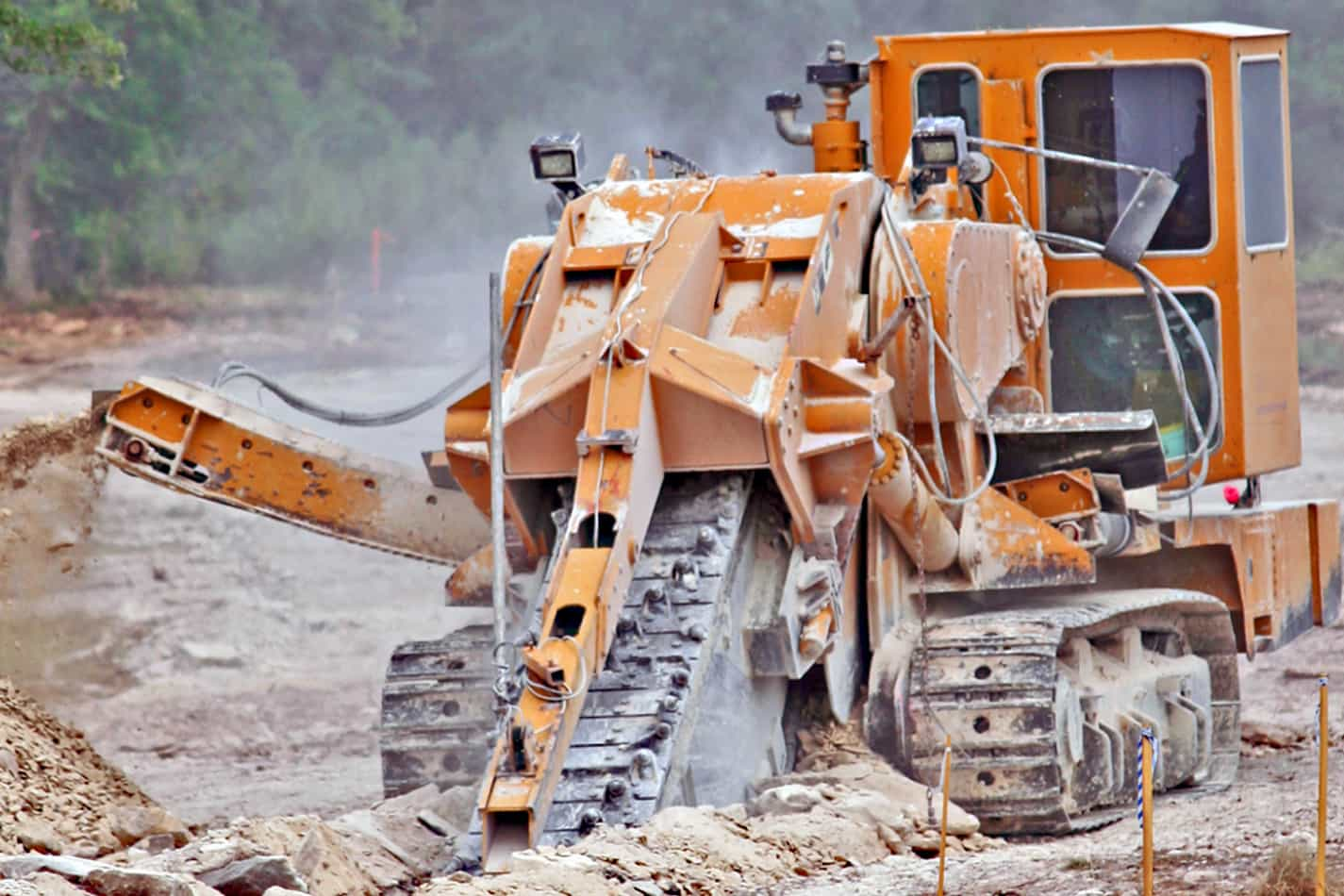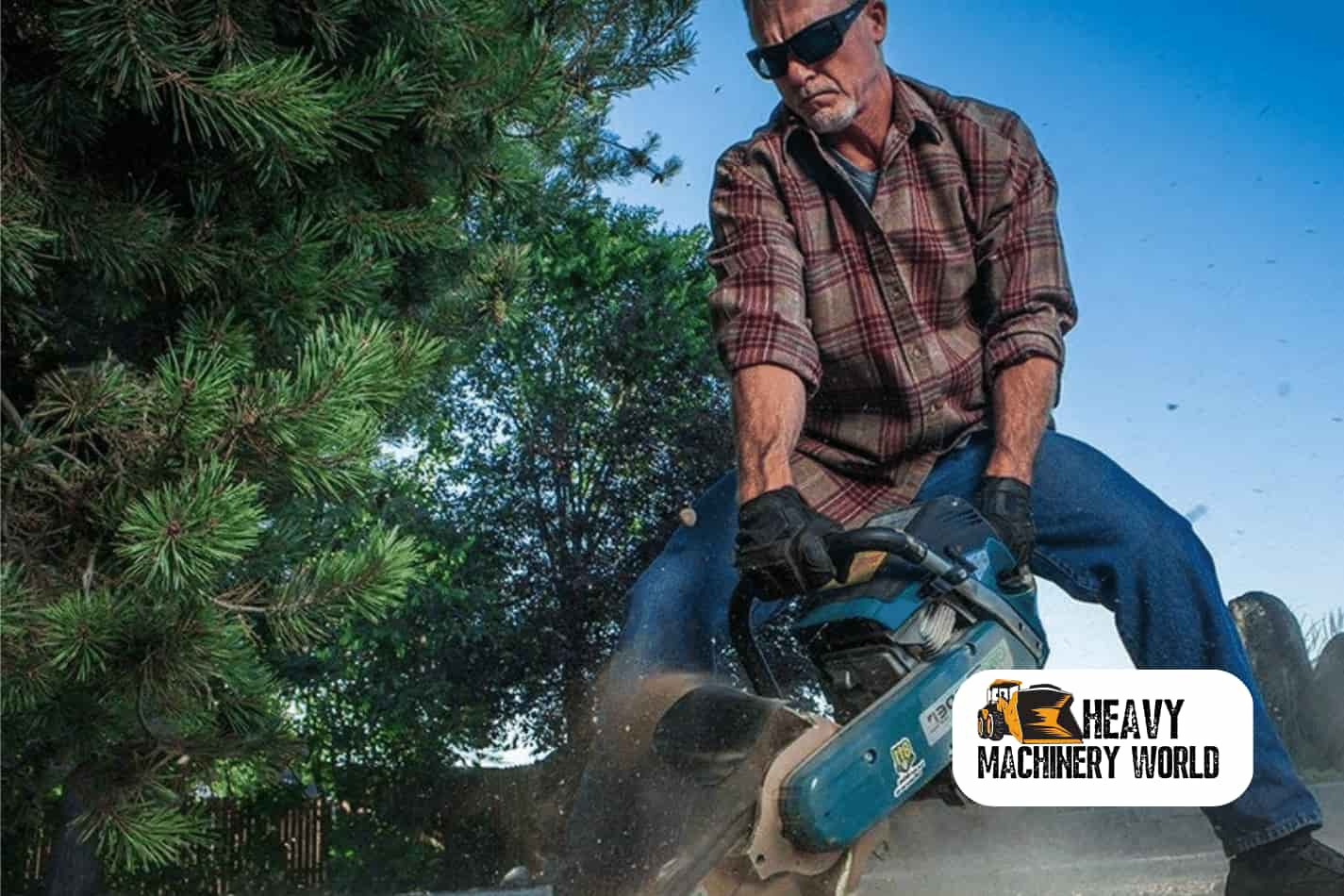Do you want to know how fast trenchers dig? Have you ever wondered how long a trencher can complete a job? If so, then this blog post is for you!
We’ll explain the factors affecting trencher digging speed and provide tips for getting the most out of your machine. Read on to learn more about this fascinating piece of equipment!

Introduction
Digging trenches for drainage or other purposes can be labor-intensive and time-consuming. Trenchers are construction equipment used to dig trenches quickly and efficiently.
They come in various shapes and sizes, from hand-held machines to heavy-duty self-propelled trenchers, and can be used for various applications.
In this blog, we will explore the types of trenchers, the factors that affect their speed, and how to dig a trench faster.
We will also discuss the difference between ground saws and self-propelled walk-behind trenchers and the benefits of using hand-held trenchers.
Finally, we will look at how fast an excavator can dig trenches. With this information, you should better understand how fast trenchers can dig and which type is best suited for your needs.
Factors Affecting Trencher Speed
Many factors can affect the speed of a trencher. The type of trench being used, the terrain, and the size of the trench all play a role.
For example, a self-propelled trencher can dig much faster than a hand-held trencher because of its higher power.
The soil type and depth of the trench also impact how quickly it can be dug. If a trencher is digging in dense clay, it will likely take more time than in sandy soil.
Additionally, if the trench is deeper, it will take longer to complete than a shallow trench.
By considering these factors before selecting a trencher for the job, users can position themselves to modify the trenching speed accordingly.
What to Consider When Choosing a Trencher
When choosing a trencher, there are several factors to consider. Firstly, you must determine how deep and wide you will be trenching.
The boom length and chain size of the trencher should be appropriate for your job and the soil type.
Secondly, you need to consider the trencher’s power, as larger machines can dig trenches more quickly than smaller models.
Additionally, the work site’s conditions can significantly affect the speed at which a trencher can operate; anything from small roots to large rocks can slow down progress.
Finally, consider whether a walk-behind trencher or a hand-held model would be best suited for the job; while walk-behind trenchers are more powerful, hand-held models may be faster in some cases.
How Fast Does a Typical Trencher Dig?
A typical walk-behind trencher can dig between 1 and 1.75 feet per minute, depending on the soil conditions and the type of trencher used.
Smaller models can usually dig trenches between 1 and 4 feet deep, while larger trenchers can dig up to 6 or 7 feet per minute in ideal conditions.
Ground saws are faster than walk-behind trenchers, as they can dig 70 feet of 13-inch trench in 10-15 minutes.
Hand-held trenchers are also an option; though they are slower than ground saws and walk-behind trenchers, they can still be a great asset when digging shorter trenches.
Finally, if you’re looking for a fast-digging solution, professional excavators are the way to go – they can dig up to 70 feet in a single minute!
How to Dig a Trench Faster
Digging a trench faster means taking into account the factors that affect the speed of a trencher.
If you are using a manual tool, such as a shovel, you can increase your speed by using proper technique and making sure your tools are sharp.
If you are using a powered trencher, you should be aware of the size and type of trencher you are using.
Ground saws can be much faster than walk-behind trenchers as they cut through the soil more quickly.
If you are using a hand-held trencher, you should consider the weight and size of the tool as well as the type of soil you are working with.
Self-propelled trenchers can also make digging faster, depending on the size and power of the machine.
Finally, if you have access to an excavator, you can likely dig a trench faster than any other method.
Ground Saws vs. Walk-Behind Trenchers
Ground saws are an alternative to walk-behind trenchers for trenching projects.
They offer more speed and power, but at a higher cost. Ground saws use a rotating blade to cut through soil, and are typically powered by gasoline or diesel engines.
The cutting depth of a ground saw can reach up to 36 inches, while the cutting width is typically limited to between 4 and 6 inches.
Ground saws can dig trenches faster than walk-behind trenchers, but they require more maintenance and come with a higher price tag.
When choosing between a ground saw and a walk-behind trencher, it is crucial to consider factors such as the size of the project, the type of soil, and the budget.
Using a Hand Held Trencher
A hand held trencher is a great tool for quickly and easily digging trenches, as it is lightweight, easy to maneuver, and requires minimal setup.
This type of trencher typically has a cutting blade mounted on a handle, allowing the user to control the direction and depth of the cut.
Hand held trenchers are ideal for small jobs, such as repairing sprinkler systems or water lines, because they can dig trenches in tight spaces that larger machines cannot access.
As with any trencher, the digging speed of a hand held trencher is determined by factors such as soil type and depth of the trench.
However, because hand held trenchers are smaller and lighter than other types of trenchers, they can often dig faster than larger models.
Additionally, they require less energy to operate than self-propelled or excavator-mounted trenches.
The best way to determine the speed of a hand held trencher is to test it out on the specific job site before beginning work.
The Benefits of Hand Held Trenchers
Hand held trenchers provide a number of benefits that make them ideal for digging trenches. They offer portability and fast-digging capabilities that help make the job easier.
These trenchers are easy to use and require minimal set up time. With the precise cutter, a trencher can dig a trench that is equal in sizing and has clean sides and a flat bottom.
The most powerful hand trencher, GeoRipper, is now available as an attachment. This allows us to store and carry a trenching machine into a backyard with the capability of getting 18″ below grade for our gas line installation.
Small walk-behind trenchers, or portable trenchers, are great for digging trenches that are just 3 to 4 feet deep while the drainage spade is made for digging shallow rough trenches up to about 12 inches deep and 5 inches wide.
These tools provide an efficient way to dig a trench quickly and accurately, making them an invaluable part of any construction project.
How Fast a Hand Held Trencher Can Dig
Handheld trenchers are popular for their portability and fast digging capabilities. They come in a variety of sizes and can be used for a variety of applications.
The speed of a handheld trencher depends on the size and type of the trencher and the type of material being dug.
Smaller trenchers can dig trenches 1-4 feet deep and 4-16 inches wide faster than a walk-behind trencher, while larger trenches, such as the TrenchBadger Pro 12 can dig deeper, wider trenches in less time.
Generally, a good working trencher of 100 linear feet will take roughly 12 hours to dig.
Factors that Impact the Digging Speed of a Hand Held Trencher
When it comes to hand-held trenchers, there are a few factors that can affect how quickly you can dig.
The type of soil and the size of the trench along with the power of the trencher are important factors.
Different types of soil require different digging speeds and larger trenches require more effort to dig.
The power of the trencher also affects the speed at which you can dig, as more powerful units will be able to dig faster than those with less power.
Additionally, suppose you are using a hand-held trencher. In that case, it is important to make sure you have a secure grip on the unit and that you use proper technique when digging, as this will help ensure you maximize your efficiency and get the job done quickly.
What Safety Measures Should I Take When Operating a Trenching Machine in the Rain?
Operating a trenching machine in rainy conditions requires special precautions to ensure safety. Here are some trenching safety tips in rainy conditions: 1. Check weather forecasts and avoid operating during heavy rain or thunderstorms. 2. Maintain good visibility by using proper lighting and wipers. 3. Keep the machine’s tires or tracks in good condition to avoid sliding or losing control. 4. Ensure the work area is appropriately drained to avoid water accumulation. 5. Stay aware of the soil’s stability and take extra caution when digging in wet conditions.
Self-Propelled Trenchers
Self-propelled trenchers are ideal for those looking for a fast and efficient way to dig. These machines can dig up to 1.75 feet per minute, and are suitable for digging trenches over long distances.
Self-propelled trenchers are a wise choice if you need to dig trenches quickly, as they will save time and effort compared to a manual trencher.
They also offer more control than a hand held trencher, allowing you to adjust the depth and width of the trench with ease.
Additionally, these machines effectively cut through dirt, clay, road fill, asphalt and tree roots, making them an excellent option for those looking for an all-inclusive trenching solution.
Using a Professional Excavator
Professional excavators are a great choice when it comes to digging trenches quickly and efficiently.
Their powerful digging arms can quickly and efficiently dig trenches of varying depths and sizes, making them ideal for large projects such as laying electrical cables or water lines.
Professional excavators are also typically equipped with a backhoe which can be used to move soil away from the trench and fill it back in.
This makes them much faster than hand-held trenchers or ground saws, which are better suited for smaller projects.
Furthermore, excavators come with various attachments that make them even more versatile, such as augers, grapples and vibratory pile drivers.
With all these features, it’s no surprise that they are a popular choice when it comes to getting the job done quickly.
Digging Speed of an Excavator
Using an excavator to dig a trench is a much faster option than a hand-held trencher or walk-behind trencher.
Depending on the size and type of excavator, it can dig a trench in a fraction of the time compared to other methods.
An excavator can also dig in various soil types and conditions, making it a great option for digging deeper trenches quickly and efficiently.
The digging speed of an excavator will depend on the size, power, and attachments available. Larger excavators are more powerful and can dig deeper trenches faster than smaller ones.
With the right attachments, an excavator can also be used to break up rocks and other hard materials that may be in the way.
Conclusion
In conclusion, trenchers are a powerful and effective tool for digging long, narrow trenches.
The speed at which a trencher will dig depends on various factors, including the type of soil, the type of trencher being used, and the operator’s skill level.
A typical trencher can dig up to 100 linear feet in 12 hours. However, there are ways to speed up the process, such as using a ground saw or hand held trencher instead of a walk-behind trencher.
For bigger projects, using an excavator may be necessary for more efficient results.
No matter what type of trencher you use, it is vital to ensure that you have the proper experience and safety equipment to complete the job safely and efficiently.




